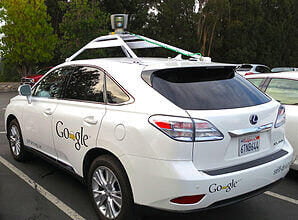If you were asked to name the top three events in the history of the IT industry, which ones would you choose? Here’s my list:
If you were asked to name the top three events in the history of the IT industry, which ones would you choose? Here’s my list:
 June 30, 1945: John Von Neumann published the First Draft of a Report on the EDVAC, the first documented discussion of the stored program concept and the blueprint for computer architecture to this day.
June 30, 1945: John Von Neumann published the First Draft of a Report on the EDVAC, the first documented discussion of the stored program concept and the blueprint for computer architecture to this day.
May 22, 1973: Bob Metcalfe “banged out the memo inventing Ethernet” at Xerox Palo Alto Research Center (PARC).
March 1989: Tim Berners-Lee circulated “Information management: A proposal” at CERN in which he outlined a global hypertext system.
[Note: if round numbers are your passion, you may opt—without changing the substance of this condensed history—for the ENIAC proposal of April 1943, Ethernet in 1973, and CERN making the World Wide Web available to the world free of charge in April 1993, so that 2013 marks the 70th, 40th, and 20th anniversaries of these events.]
Why bother at all to look back? And why did I select these as the top three milestones in the evolution of information technology?
Most observers of the IT industry prefer and are expected to talk about what’s coming, not what’s happened. But to make educated guesses about the future of the IT industry, it helps to understand its past. Here I depart from most commentators who, if they talk at all about the industry’s past, divide it into hardware-defined “eras,” usually labeled “mainframes,” “PCs,” “Internet,” and “Post-PC.”
Another way of looking at the evolution of IT is to focus on the specific contributions of technological inventions and advances to the industry’s key growth driver: digitization and the resulting growth in the amount of digital data created, shared, and consumed. Each of these three events represents a leap forward, a quantitative and qualitative change in the growth trajectory of what we now call big data.
The industry was born with the first giant calculators digitally processing and manipulating numbers and then expanded to digitize other, mostly transaction-oriented activities, such as airline reservations. But until the 1980s, all computer-related activities revolved around interactions between a person and a computer. That did not change when the first PCs arrived on the scene.
The PC was simply a mainframe on your desk. Of course it unleashed a wonderful stream of personal productivity applications that in turn contributed greatly to the growth of enterprise data and the start of digitizing leisure-related, home-based activities. But I would argue that the major quantitative and qualitative leap occurred only when work PCs were connected to each other via Local Area Networks (LANs)—where Ethernet became the standard—and then long-distance via Wide Area Networks (WANs). With the PC, you could digitally create the memo you previously typed on a typewriter, but to distribute it, you still had to print it and make paper copies. Computer networks (and their “killer app,” email) made the entire process digital, ensuring the proliferation of the message, drastically increasing the amount of data created, stored, moved, and consumed.
Connecting people in a vast and distributed network of computers not only increased the amount of data generated but also led to numerous new ways of getting value out of it, unleashing many new enterprise applications and a new passion for “data mining.” This in turn changed the nature of competition and gave rise to new “horizontal” players, focused on one IT component as opposed to the vertically integrated, “end-to-end solution” business model that has dominated the industry until then. Intel in semiconductors, Microsoft in operating systems, Oracle in databases, Cisco in networking, Dell in PCs (or rather, build-to-order PCs), and EMC in storage have made the 1990s the decade in which “best-of-breed” was what many IT buyers believed in, assembling their IT infrastructures from components sold by focused, specialized IT vendors.
The next phase in the evolution of the industry, the next quantitative and qualitative leap in the amount of data generated, came with the invention of the World Wide Web (commonly mislabeled as “the Internet”). It led to the proliferation of new applications which were no longer limited to enterprise-related activities but digitized almost any activity in our lives. Most important, it provided us with tools that greatly facilitated the creation and sharing of information by anyone with access to the Internet (the open and almost free wide area network only few people cared or knew about before the invention of the World Wide Web). The work memo I typed on a typewriter which became a digital document sent across the enterprise and beyond now became my life journal which I could discuss with others, including people on the other side of the globe I have never met. While computer networks took IT from the accounting department to all corners of the enterprise, the World Wide Web took IT to all corners of the globe, connecting millions of people. Interactive conversations and sharing of information among these millions replaced and augmented broadcasting and drastically increased (again) the amount of data created, stored, moved, and consumed. And just as in the previous phase, a bunch of new players emerged, all of them born on the Web, all of them regarding “IT” not as specific function responsible for running the infrastructure but as the essence of their business, data and its analysis becoming their competitive edge.
We are probably going to see soon—and maybe already are experiencing—a new phase in the evolution of IT and a new quantitative and qualitative leap in the growth of data. The cloud—a new way to deliver IT, big data—a new attitude towards data and its potential value, and The Internet of Things (including wearable computers such as Google Glass)—connecting billions of monitoring and measurement devices quantifying everything—combine to sketch for us the future of IT.
[Originally published on Forbes.com]
(image: Big Data milestones / shutterstock)








